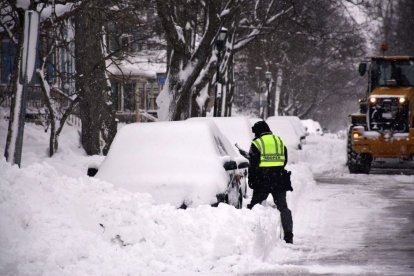Cold causes twice as many deaths as hot weather
For example, in 2019 South Africa suffered 453 deaths related to heat stroke or heatstroke, while there were 8,372 from hypothermia

Archivo / Cordon Press
For some reason, cold has a good reputation. Fur and leather coats add glamour. Snow gives Christmas a particular magic. And the possibility of drinking a hot coffee held with both hands fulfills a function that goes far beyond that of stimulating the nervous system. On the contrary, heat is always the villain in every movie, the factor that threatens the future of mankind. However, behind all this romanticism lies a cold hard fact: cold is twice as deadly as heat.
Climate change warnings and efforts (at least discursively) by countries to reduce their greenhouse gas emissions have demonized rising temperatures, which of course have negative consequences, such as rising sea levels, extreme weather events, and changes in agricultural productivity. However, according to a Centers for Disease Control and Prevention study by the Centers for Disease Control and Prevention, deaths caused by low temperatures are more than twice as high.
The report, published in July 2014, focused on the period from 2006-2010. During those five years, they analyzed the number of deaths per year due to extreme weather conditions, obtaining an average of 2,000 deaths per year. Of that total figure, about 31% was attributed to "excessive heat," while "excessive cold" was responsible for 63%. The remaining 6% were due to floods, storms, or lightning.
A global trend
Complementarily, research published in August 2021 by The Lancet journal, indicated that, after compiling data from nine countries in different years, extremely low temperatures have killed more people than high temperatures. The case studies were: Brazil, Chile, China, Colombia, Guatemala, Mexico, New Zealand, and the United States.
For instance, in 2019, South Africa suffered 453 deaths related to heat stroke or heat waves, while 8,372 were from hypothermia. In New Zealand, there were only two deaths from heat, but 1,191 from cold. And in China, the number of deaths from exposure to sweltering heat was 46,224, although the number of deaths from hypothermia or secondary effects was 455,735.
Gradual threat
Heat-related deaths have the particularity that they occur more suddenly, making them more immediately visible or observable: when the body temperature rises too high, the internal regulation system that keeps both the heart and the brain in good condition quickly collapses.
In contrast, with cold, the process most often occurs more gradually. Although hypothermia can also kill on the spot, constant exposure to cold inhibits immune responses, leading to infections and cardiovascular, respiratory, or metabolic diseases that are fatal over time.
In line with the two previous studies, the Danish writer, professor, and environmentalist Bjorn Lomborg provides a figure that expands the time frame, comparing deaths from extreme temperatures between 1920 and 2022: in the latter years, fatal weather-related deaths were 97.7% lower than a century ago
Thus, it can be seen how frosty conditions were and continue to be more harmful than hot conditions. Therefore, although climate change and rising temperatures will have consequences for humanity, it is certain that in the short and medium term, total climate-related deaths will also decrease.
RECOMMENDATION





















